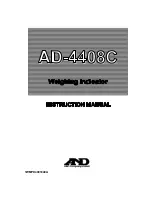
AW T 210 |
2- W I R E CO N D U C T I V I T Y, P H/O R P, P I O N T R A N SM I T T ER | O I/AW T 2 10 - EN R E V. C
11
5 Mechanical installation
Sensor installation
Refer to the sensor’s Operating Instruction for installation
procedures.
Transmitter installation
Transmitter dimensions
Dimensions in mm (in)
Figure 9 Transmitter dimensions
Fitting communication modules
Referring to Figure 10:
1 Ensure the locking spindle on both modules is in the
UNLOCKED position.
2 Fit communication module
A
to baseboard
B
(the left, COMMUNICATION MODULE position).
3 Turn the locking spindle 1/4 turn to the LOCKED position.
4 Fit sensor module
C
to baseboard
D
(the right, SENSOR MODULE position).
5 Turn the locking spindle 1/4 turn to the LOCKED position.
Figure 10 Fitting communication modules
Location
For general location requirements refer to Figure 11. Select a
location away from strong electrical and magnetic fields. If this
is not possible, particularly in applications where mobile
communications equipment is expected to be used, screened
cables within flexible, earthed metal conduit must be used.
Install in a clean, dry, well ventilated and vibration-free location
providing easy access. Avoid rooms containing corrosive gases
or vapors, for example, chlorination equipment or chlorine gas
cylinders.
Figure 11 Transmitter location
Optional installation accessories
• Cable gland kit
• Panel-mount kit
• Pipe-mount kit
• Weathershield
144 (5.67)
10
(0.39)
55
(2.16)
99 ( (3.89)
73 ( (2.87)
144
(5.67)
16
(0.63)
COMMUNICATION
MODULE
SENSOR
MODULE
LOCKED UNLOCKED
Max. cable distance
transmitter to sensor
(refer to sensor
Operating Instruction)
0 to 95 % RH
non-condensing
Eye-level location
Ambient temperature
Humidity
IEC 60068-2-6 Test FC: vibration, sinusoidal
–20 °C
(–4 °F)
min.
60 °C
(140 °F)
max.












































